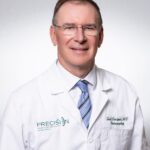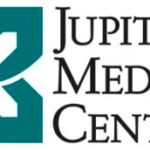 One year after the first U.S. death from coronavirus, there is finally a glimmer of hope and enthusiasm as the vaccine rollout continues. As an experienced epidemiologist, I recognize the rapid development of a vaccine for what it is: a scientific breakthrough of profound importance.
One year after the first U.S. death from coronavirus, there is finally a glimmer of hope and enthusiasm as the vaccine rollout continues. As an experienced epidemiologist, I recognize the rapid development of a vaccine for what it is: a scientific breakthrough of profound importance.
I have been vaccinated, and so should every other health care provider, from hospitals to doctor’s offices to nursing homes. We have a shared duty to protect the health and well-being of those we serve, and as we have stepped up so many times – and in so many ways – to serve them, so too should we step up to receive our vaccination.
I have found my thoughts turning to the early days of vaccine development. In 1886, Louis Pasteur gave an experimental vaccine to a boy named Joseph Meister, who was dying of rabies. Pasteur didn’t know whether the vaccine would have a significant long-term effect on the boy’s life – all he knew was that Joseph would surely die if nothing was done. Similarly, I know that if we as a population do nothing, this virus will continue to claim a horrific number of lives.
Through various leadership positions, including as a state epidemiologist and as a country director for the Centers for Disease Control and Prevention, I witnessed not only the marvel of effective vaccines saving lives, but also the devastation caused by their lack of use. I have been deployed to Africa on projects related to polio and the Ebola virus, and I understand what it takes to stop a widespread outbreak. I am confident the COVID-19 vaccine will be an effective tool in bringing an end to the current pandemic.
I am a bit dismayed, however, by reports that large numbers a citizens – including health care and frontline workers – are reluctant to get the vaccine. In December, an internal survey at Miami’s largest public hospital found that fewer than half said they would get the vaccine as soon as it became available. And a Kaiser Family Foundation report that same month found that almost one-third of health care workers were hesitant to do so. While thousands of health care workers have received the vaccine since then, it just takes one person to spread this deadly virus.
I believe that all of us in health care have an elevated duty to be vaccinated to protect ourselves, so that we can protect them – and do our part in protecting the community at large.
Although the speed with which the COVID-19 vaccine was developed is unprecedented, we should take comfort in the thorough review process it has undergone and the brilliant community of physicians and scientists responsible for its development.
This process was boosted by a vast community of highly qualified researchers, in both the public and private sectors, who focused their resources on this mission. The vaccine underwent a thorough process of clinical trials, data collection, and data analysis. The process has also been quite transparent – the data can be found on the Food and Drug Administration website, and the Advisory Committee discussions can be viewed by anyone.
I am satisfied that this vaccine is appropriately safe and will be an impactful part of putting the pandemic behind us for the long term. It’s important for the public to recognize that, much like vaccines for tetanus and meningitis, the leading COVID-19 vaccines require multiple doses to be fully effective – and the second dose must come from the same brand as the first. The easiest way for you and your doctor to know which vaccine you received is to ask your vaccination team to add the information into the Florida Shots system.
As we navigate these early stages of the vaccine distribution, we must remember that face coverings, handwashing, and social distancing remain important tools to reduce the spread. Vaccination is the finishing touch to achieve our shared goal of putting this deadly disease behind us.
I hope you’ll join me in doing everything possible to keep our communities healthy. We must work together, toward one goal. To end the deadly COVID-19 pandemic, we need the highest possible number of immune individuals in the population. For an individual to become immune, the choice becomes to get either the illness or the vaccine. For me, that choice is clear.


























